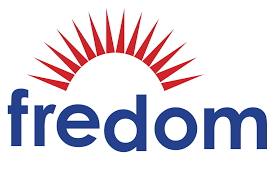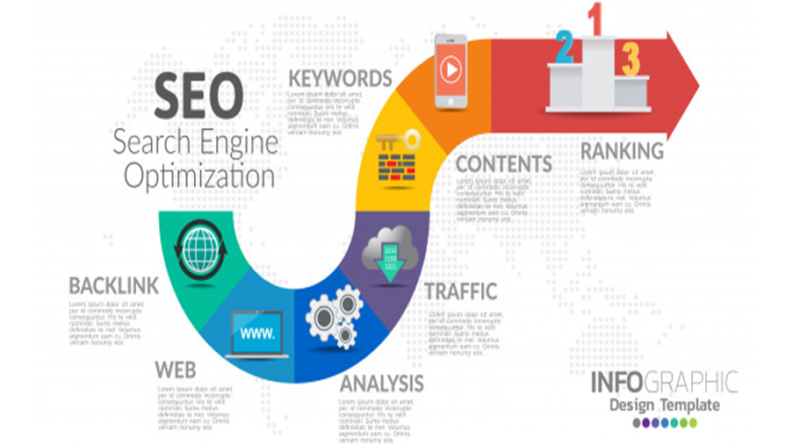5 SEO Practices to Improve SEO of Your Website
If you are wondering what are the simplest SEO techniques, you came across the right article! I will try to explain to you, in 5 simple points, how to improve the Google referencing of your website.
REMINDER: WHY IS SEO IMPORTANT?
SEO is the set of techniques that improve the quality of your website in the eyes of users, especially Google. If you apply these strategies, you will maximize your chances of reaching the heights of SERP ( Search Engine Result Page )!
Getting your website makes it possible to improve visibility , ensuring it to be well positioned in Google results . And having your site in the first position of the search engine results pages, allows you to generate traffic and be visible!
If you want to rank on the first page of google and looking for the best SEO agency in dubai you must try digitalmarketing.ae.
You can also lean towards paid referencing (as with Google Adwords which sells sponsored links), but the techniques of web referencing which follow are completely free.
Are you ready ? Let’s go !
FIRST STEP: CHOOSING THE RIGHT KEYWORDS FOR QUALITY SEO
A good SEO , or a good SEO optimization, starts with a choice of relevant keywords.
Each page of a website is linked to a keyword: this is what the user must type in the Google search bar to be able to find it.
If you define your keyword correctly, you are all the more likely to attract qualified traffic.
In SEO referencing, we differentiate the main keyword (the one that best describes your page) from secondary keywords (synonyms of the main keyword, which must be used as much as possible and placed strategically).
HOW TO CHOOSE THE RIGHT KEYWORD?
In order to get an idea of what your main keyword should look like, you need to ask yourself about the general theme of your web page .
Then you will have to do a keyword analysis. Ask yourself about:
The number of searches related to this keyword,
Its competitive side,
Its specificity: you can choose a general (more popular) or specific keyword; more detailed with what is called a “long tail”.
The longer the tail , the less the word will be searched but the more it will lead to qualified traffic.
To find out all this, internet geniuses have invented software such as Ubersuggest, Wordstream or Keyword Tool (to name a few).
AND ONCE I HAVE MY KEYWORDS?
Once you have chosen your keywords, we advise you to place them in hot zones : these are the zones considered as the most important by Google Bots .
These are the Title tag (title that appears on the first page of Google search results), the h1 tag (your page name, which appears at the top), and the h2 to h6 tags (which are the subtitles of your article).
The more Hn tags you have, the more secondary keywords you will be able to place there (so that your article goes up in Google algorithms). In addition, it will appear much more structured and clear to internet users: it will therefore be much more pleasant to read !
SECOND STEP: WORK ON THE SERP, TO MAKE A GOOD FIRST IMPRESSION
We only have one chance to make a good first impression, and it starts from the Title tag.
DO NOT HESITATE TO WORK WELL ON YOUR DIFFERENT TAGS
Each page has a unique Title tag .
You have to take the time to work on it, incorporating keywords.
It must be between 55 and 65 characters .
So you need a rather short and striking Title tag : do not hesitate to divide it in half with “:” or a “-”. Make the user want to read your article ! (And don’t forget to put your main keyword at the beginning of the Title tag, it helps)
The same goes for the h1 tag: we advise you to incorporate one of your secondary keywords (there are two schools on this: some will tell you to copy and paste the TITLE tag, others will also tell you to use only the same main keyword).
Tip: it should be about 70 characters long , be striking too. For my part, I advise you rather to make it different from the Title tag, because this will allow you to have an optimized hot zone, other than the Title tag. And since these are the areas that are most taken into account by Google to determine the interest of your article, I’m not drawing you…
AND APART FROM THE TAGS?
On the Google search page, under the Title tag, there is a small text: this is the meta description . It describes the general idea of the link (150 to 160 characters), so it is an indicator for the internet user of what he will find there.
It is the first thing that the user will read: it is therefore necessary to write something that attracts him, makes him want to know more.
NB: the Google algorithm does not take into account the words you use in the meta description, so do not bother to include keywords
THIRD STEP: WRITE INTERESTING CONTENT, TO KEEP YOUR READERS’ INTEREST
If people click on your site but only stay there for a few seconds, your clickthrough rate will be good, but your bounce rate will be very bad : which sends a bad signal to Google. So make sure that users spend time on your page.
WRITES RELEVANT CONTENT
Your goal is to improve the user experience on your site : optimizing its content will increase traffic.
Your content must therefore be of high added value , consistent with your keyword and with what users are likely to seek. You also need to ask yourself about the audience you are targeting: adapt your language and vocabulary to your audience.
SEMANTIC OPTIMIZATION OF YOUR CONTENT
You have to optimize the semantic field of what you write. Indeed, choosing certain words rather than others will increase your score in the eyes of Google : because certain words are more related to the theme that you present, they belong more to its lexical field.
To know which words to use, you can go to software such as 1.fr or Alyze, which were created for that.
But watch out for duplicate content ! If you write content that is considered to be duplicated, Google will have to apply a penalty because it will consider that you may have plagiarized another user. To make sure you avoid duplicate content, you can use Copyscape software .
FOURTH STEP: OPTIMIZING YOUR IMAGES, TO MAXIMIZE LOADING SPEED
Choosing your images is as crucial as choosing your words!
MINIMIZE THE LOADING TIME OF YOUR PAGE
If your page does not load, the user will not stay there. So you have to put images to catch the eye, but make sure that they are not too heavy.
You can for example choose light images, or compress them afterwards (we advise you to avoid HD anyway). Your images must illustrate a clear and precise idea, they must be effective. Choose the image format that suits you best , while keeping in mind the loading speed!
NAMES ALSO MATTER
It is better to name your photo: this can contribute to your good positioning by the algorithm . You MUST also assign an alt tag to your photo: descriptions that explain its value. Even if it does not appear, the user will be able to see what it is about and will not get bored so easily. And above all, it’s great for SEO!
NB: Do not forget to make sure that your website is suitable for all computer media!
FIFTH STEP: STAY CONNECTED, TO KEEP YOUR SITE AFLOAT!
It is not because your website is finished that everything is acquired.
ALWAYS KEEP YOURSELF UPDATED
Web pages are created every day: so your site is always likely to go down in the ranking. So don’t hesitate to take a look from time to time, to keep up to date with the latest releases and to update your articles. Even write others! Otherwise you risk crashing very quickly.
A regular presence ensures your site a long existence.
CREATE A GOOD MESH FOR YOUR SITE
It is an essential SEO strategy : on one of your pages, you will refer to another page of your website (internal links, inbound links), or then to a website external to your website (external links ).
These backlinks provide a life to your site, and the more you refer to trusted sites, the better the notoriety!
You can also ask other site editors to refer to your site , but pay attention to consistency. Whether for your internal or external network , the two pages that echo each other must have a link, especially thematic. And all of these contacts can lead to potential partnerships, with bloggers for example.
BONUS: WHAT YOU SHOULD ALWAYS KEEP IN MIND
The 5 techniques that we have just presented to you are literally technical, but they are not everything.
Although dematerialized, the internet remains a platform that links people (Internet users or publishers). So if you want your site to work, we strongly advise you to have a web marketing strategy, and to treat Internet users as you would like to be treated!
4 SEO tips for quick results
You are on the right site. We tell you everything
However, I must warn you that a natural SEO strategy is not easy, glamorous and fast.
This is not the only bad news, you have to work hard if you want results from your internet SEO strategy on Google!
I know most people have left this article because they are afraid of any sign of hard work.
But I also know that you are not like most people because you are always there!
Because you stayed, I will tell you the good news:
While this natural SEO strategy is not easy, it will increase your traffic and provide you with an exceptional return on investment in the long term.

